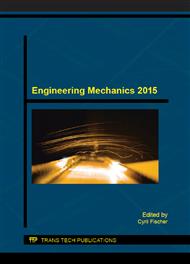p.3
p.10
p.16
p.23
p.31
p.39
p.48
p.57
p.63
Numerical Solution of Wet Steam Flow through Blade Cascade
Abstract:
The paper concerns with the numerical modeling of wet steam flow through a blade cascade in transonic regime with non-equilibrium condensation in 2D. Real thermodynamics of vapor phase is implemented in the way which mostly avoid iterations in order to calculate thermodynamic properties. This equation of state is represented by the function for non-dimensional entropy with independent variables scaled density and scaled internal energy. Other equations of state are used for comparison, namely special gas equation which comes from IAPWS-95 formulation and simple pseudo perfect gas relation. We applied simple homogeneous non-equilibrium approach to model two-phase flow. Laminar compressible Navier-Stokes system of equations is used for the mixture properties. Liquid phase is described by the standard method of moments of droplet number distribution function. We consider obtained numerical results to be in good agreement with the measured data. We note the fact that robust and accurate closure of supplementary liquid system (nucleation rate and droplet growth model) is still not available and most often ad-hoc corrections are proposed by the authors. Results show differences among used equations of state as well. This is apparent mainly in the vicinity of condensation shock region on the suction side.
Info:
Periodical:
Pages:
31-38
Citation:
Online since:
January 2016
Authors:
Keywords:
Price:
Сopyright:
© 2016 Trans Tech Publications Ltd. All Rights Reserved
Share:
Citation:


